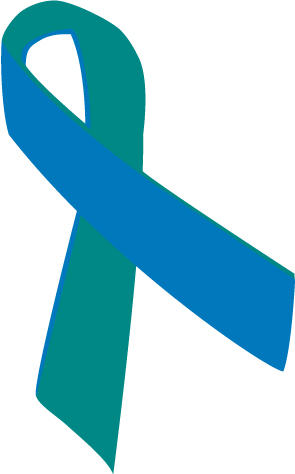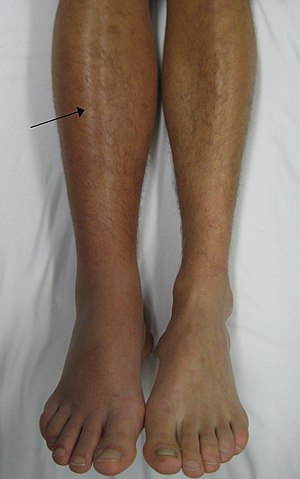Have the Gods got something in forNew Zealand'sSouth Island?
OPINION: First published at Fortitude
by peter petterson
Many, if not all, readers would have heard or read about the extremely destructive 7.1 earthquake that struckChristchurch and the surrounding Canterbury district nearly three weeks ago. Actually there are many people around the globe who think New Zealand is part of Australia anyway. Well, this is not designed as a geographical guide but more as a factual newspiece expanding on what you may or may not know about this mind-numbing earthquake that has been repeated by a total of 1200 aftershocks which occur everyday and night since. Yes, I did say 1200 aftershocks! I've never heard of so many after an earthquake, have you?
At 7.1 on theRichter Scale this earthquake was identical in destructive force to the one in Haiti mamy months ago that killed tens of thousands, injured scores of thousands and probably made a million homeless for some period of time. What was the difference?
New Zealand is a first world country with extremely high standards of building, has a small spread out population — Christchurch, which is New Zealand's second largest city, has only 400,000 at the most, including its environs. But the saving grace of Christchurch during this shocking earthquake was the time — 4-35am. A few hours earlier and thousands would have been caught in restaurants, cafes, bars and on the streets; and a few hours later the early shoppers would have been caught in malls, shops, cafes and also on the streets.
The authorities, both local and centralgovernment agencies moved extremely quickly to support the victims of the earthquake. The prime minister, John Key and some of his ministers were down in Christchurch by the Sunday morning to see at first hand the results of this shocking earthquake and what should be done initially to help the local council's support of the victims. Nobody was killed, though there have been some fatal heart attacks which could be attributed to the earthquake, and only a few were seriously injured. One middle aged man was hit by a collapsing chimney that came through his bedroom ceiling and was seriously injured; and remains in a critical condition nearly three weeks later.
Finacial support has been given to help residents in the first few weeks, and companies with less than twenty employees were given wage subsidies later in the first week, for the first month to get their business operational and to help the local economy get back into gear.
Experts moved into action on the Monday morning examining damaged buildings in the city's CBD and then out into the residential areas both within the central city, suburbs and the outlying areas. Welfare centres were set up in schools, an indoor stadium and at Addington Raceway for homeless and those unable to go back to their homes for a variety of reasons, including the lack of sewerage, running water, and for psychological reasons caused by the repetitive aftershocks which were like minor earthquakes on their own.
Christchurch looked like a bombsight initially with the wreckage of buildings scattered throughout the streets of the city, making them extremely difficult to travel through. Within days it soon became obvious just how much damage had been caused, roughly how many buildings would be condemned and need to be destroyed for safety reasons. Red stickers were placed on condemned buildings and homes, and green stickers for those that could be saved and repaired. Insurance assessors were quickly involved in doing their particular tasks within the first few days. In New Zealand the state Earthquake Commission pays for the first $100,000 of individual damage caused by earthquakes.
Cleaning up the streets, repairing sewerage andwater mains and ensuring the homeless were taken care of in the welfare centres was the first priority in the days after the earthquake. And the aftershocks continued day and night creating psychological torture for the residents of Christchurch and out in the rural districts. While many streets showed evidence of the destructive force of this huge earthquake, out in the countryside the faultline looked as though bulldozers had carved up the earth for miles and miles lifting flat and even paddocks into untidy piles of earth in some places. The faultline had been there for 16,000 years and nobody had been aware of its existence.
The early estimates of two billion dollars in damage and estimated reconstruction, had doubled to four billion within a week — about three billion in American dollars. This is undoubtably New Zealand's worst civil disaster in monetary terms. The lack of fatalities and serious injuries are in fact incredible. Slowly but surely life has resumed, most children are back to school, and people are going back to work as their employers get their businesses back into operation. Life is not normal, of course, but the city is breathing some life again, and hopes are rising and the people are becoming positive once again. There are still many people who are homeless in the city, and a few hundred in the eastern suburbs who still do not have sewerage and running water — they are still using chemical toilets and have to wash at the local mall.
But they often say things go in threes. The day following the earthquake, at Fox Glacier a few hundred miles southwest of Christchurch, a small plane crashed on takeoff killing all nine onboard.
Just last weekend New Zealand was hit by a polar-like storm with snowstorms in the deep south being the worst in decades. In Invercargill city the local indoor stadium and some other buildings, were totally destroyed by the heavy snow, and out in the rural area farmers have lost a million newborn lambs. Throughout the rest of the country galeforce winds and rain caused considerable damage to homes and property. One would have to seriously consider that the South Island was on the receiving end of some retributive Karma force. Or perhaps somebody forgot to pay their bills?
As I close, quite safe and remote here in Wellington some 220 miles north of Christchurch, incidently my home town, I hear that the aftershocks are continuing, albeit less frequent and a little milder. My extended family members have been quite safe down south, and don't appear to have much damge caused to their homes, and have not suffered any personal injuries, apart from those psychologically.
Christchurchites are anticipating some better nights' sleep in coming weeks. And nobody will begrudge these hearty souls!
Published at Fortitude September 27 2010
Copyright 2010 Peter Petterson
OPINION: First published at Fortitude
by peter petterson
Many, if not all, readers would have heard or read about the extremely destructive 7.1 earthquake that struckChristchurch and the surrounding Canterbury district nearly three weeks ago. Actually there are many people around the globe who think New Zealand is part of Australia anyway. Well, this is not designed as a geographical guide but more as a factual newspiece expanding on what you may or may not know about this mind-numbing earthquake that has been repeated by a total of 1200 aftershocks which occur everyday and night since. Yes, I did say 1200 aftershocks! I've never heard of so many after an earthquake, have you?
At 7.1 on theRichter Scale this earthquake was identical in destructive force to the one in Haiti mamy months ago that killed tens of thousands, injured scores of thousands and probably made a million homeless for some period of time. What was the difference?
New Zealand is a first world country with extremely high standards of building, has a small spread out population — Christchurch, which is New Zealand's second largest city, has only 400,000 at the most, including its environs. But the saving grace of Christchurch during this shocking earthquake was the time — 4-35am. A few hours earlier and thousands would have been caught in restaurants, cafes, bars and on the streets; and a few hours later the early shoppers would have been caught in malls, shops, cafes and also on the streets.
The authorities, both local and centralgovernment agencies moved extremely quickly to support the victims of the earthquake. The prime minister, John Key and some of his ministers were down in Christchurch by the Sunday morning to see at first hand the results of this shocking earthquake and what should be done initially to help the local council's support of the victims. Nobody was killed, though there have been some fatal heart attacks which could be attributed to the earthquake, and only a few were seriously injured. One middle aged man was hit by a collapsing chimney that came through his bedroom ceiling and was seriously injured; and remains in a critical condition nearly three weeks later.
Finacial support has been given to help residents in the first few weeks, and companies with less than twenty employees were given wage subsidies later in the first week, for the first month to get their business operational and to help the local economy get back into gear.
Experts moved into action on the Monday morning examining damaged buildings in the city's CBD and then out into the residential areas both within the central city, suburbs and the outlying areas. Welfare centres were set up in schools, an indoor stadium and at Addington Raceway for homeless and those unable to go back to their homes for a variety of reasons, including the lack of sewerage, running water, and for psychological reasons caused by the repetitive aftershocks which were like minor earthquakes on their own.
Christchurch looked like a bombsight initially with the wreckage of buildings scattered throughout the streets of the city, making them extremely difficult to travel through. Within days it soon became obvious just how much damage had been caused, roughly how many buildings would be condemned and need to be destroyed for safety reasons. Red stickers were placed on condemned buildings and homes, and green stickers for those that could be saved and repaired. Insurance assessors were quickly involved in doing their particular tasks within the first few days. In New Zealand the state Earthquake Commission pays for the first $100,000 of individual damage caused by earthquakes.
Cleaning up the streets, repairing sewerage andwater mains and ensuring the homeless were taken care of in the welfare centres was the first priority in the days after the earthquake. And the aftershocks continued day and night creating psychological torture for the residents of Christchurch and out in the rural districts. While many streets showed evidence of the destructive force of this huge earthquake, out in the countryside the faultline looked as though bulldozers had carved up the earth for miles and miles lifting flat and even paddocks into untidy piles of earth in some places. The faultline had been there for 16,000 years and nobody had been aware of its existence.
The early estimates of two billion dollars in damage and estimated reconstruction, had doubled to four billion within a week — about three billion in American dollars. This is undoubtably New Zealand's worst civil disaster in monetary terms. The lack of fatalities and serious injuries are in fact incredible. Slowly but surely life has resumed, most children are back to school, and people are going back to work as their employers get their businesses back into operation. Life is not normal, of course, but the city is breathing some life again, and hopes are rising and the people are becoming positive once again. There are still many people who are homeless in the city, and a few hundred in the eastern suburbs who still do not have sewerage and running water — they are still using chemical toilets and have to wash at the local mall.
But they often say things go in threes. The day following the earthquake, at Fox Glacier a few hundred miles southwest of Christchurch, a small plane crashed on takeoff killing all nine onboard.
Just last weekend New Zealand was hit by a polar-like storm with snowstorms in the deep south being the worst in decades. In Invercargill city the local indoor stadium and some other buildings, were totally destroyed by the heavy snow, and out in the rural area farmers have lost a million newborn lambs. Throughout the rest of the country galeforce winds and rain caused considerable damage to homes and property. One would have to seriously consider that the South Island was on the receiving end of some retributive Karma force. Or perhaps somebody forgot to pay their bills?
As I close, quite safe and remote here in Wellington some 220 miles north of Christchurch, incidently my home town, I hear that the aftershocks are continuing, albeit less frequent and a little milder. My extended family members have been quite safe down south, and don't appear to have much damge caused to their homes, and have not suffered any personal injuries, apart from those psychologically.
Christchurchites are anticipating some better nights' sleep in coming weeks. And nobody will begrudge these hearty souls!
Published at Fortitude September 27 2010
Copyright 2010 Peter Petterson
Related articles by Zemanta
- Spooner trained for Games amid aftershocks (3news.co.nz)
- 'Two thirds of Christchurch homes damaged' in New Zealand earthquake (telegraph.co.uk)
- New Zealand braced for quake aftershocks (channel4.com)
- "Timeline of the Christchurch Earthquake" and related posts (googlemapsmania.blogspot.com)
- RWC tickets for Christchurch held back (3news.co.nz)

























